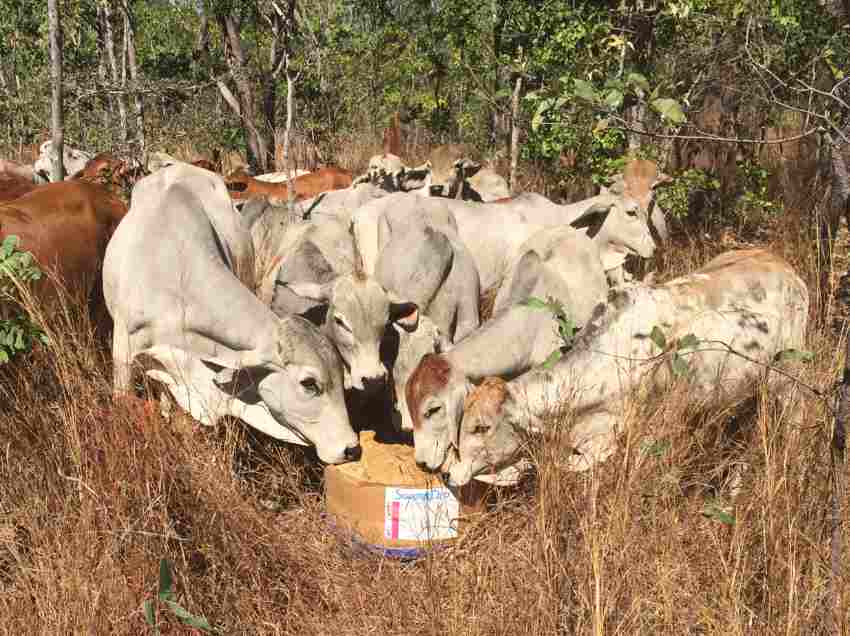Harvest Fuel Inc was founded in 1991 and has two divisions. SweetPro Feeds® produces vitamin and mineral supplements for animals using a DDGS (Dried Distillers Grain with Solubles) platform. ProBiotein® produces postbiotic yeast culture as an ingredient for supplements and rations.
Interview with Brad Thornberg, President of Harvest Fuel Inc.
What are the main areas of activity of the company?
Brad Thornberg: SweetPro manufactures solid, no-molasses, vitamin and mineral lick blocks along with the loose mineral supplementation product, MINEX. These products are based on the use of DDGS and CDS (Condensed Distillers Solubles) as the fermented carrier. ProBiotein®LLC, produces advanced postbiotic yeast with a broad amino acid profile and multiple prebiotics attached.
What’s the news about new products/services?
B.T: The traditional way of feeding supplements has been with molasses as a mineral carrier/binder. However, the understanding of gut health has led to supplementation that does not contain simple sugars from molasses, but are instead designed to use complex carbohydrates more compatible with the rumen’s fiber orientated digestion. The addition of the postbiotic yeast culture, ProBiotein, supports cattle immune systems. MOS and ß-glucan from the yeast cell wall help remove pathogens, while other prebiotic fibers (AXOS, XOS, FOS) from the yeast’s multigrain growth media support important rumen and lower-gut bacteria. In another development, support for weaning, heat and transportation stress has led to the use of a natural anti-stress blend additive (cinnamon, clove, capsaicin) in SweetPro. Garlic too has found a place in the fight against flies, ticks and lice alongside more traditional feed-through IGR.
What are the ranges of products/services?
B.T: SweetPro Feeds has a range of bio-available vitamin & mineral supplements that match the condition of forages consumed. They are designed to support higher conception rates while improving forage-feed efficiency, energy, gain and overall herd health. SweetPro vitamin and minerals are available in solid, no-molasses, DDGS-based blocks and the loose form MINEX. The blocks are built for even delivery to the entire herd. All SweetPro supplements come with high omega3 and the postbiotic and multi-prebiotic yeast culture, ProBiotein® to support gut health.

What is the state of the market where you are currently active?
B.T: The current market is seeing high prices for cattle but faces headwinds from high interest rates and decades-low cattle numbers. The Winter of 2024 also saw warmer temperatures throughout the western regions and a subsequent pullback on amount of supplementation due to adequate forage on the ranges.
What can you tell us about market trends?
B.T: The future of mineral supplementation is evolving towards use throughout the year, not just the Fall and Winter months. Supplement products will target cattle gut health, the microbiome of the rumen and lower tract, to support the reduction of antibiotic use. While the initial costs of year-round supplementation are higher, the boost in animal performance in all areas, from feed efficiency to fertility creates a greater return for the producer. Nutrients from stools worked into the soil by dung beetles will increasingly improve the fertility of the pastures. The land is then benefited from enhanced feed efficiency. All stakeholders, Producers, Land Managers and Consumers benefit from these advancements in cattle health.

What are the most innovative products/services marketed?
B.T: ProBiotein postbiotic yeast culture is the most advanced in the market. Specialized fermentation techniques and the multigrain growth media significantly broaden the amino acid profile and adds three prebiotic fibers, AXOS, XOS and FOS to the two, MOS and ß-glucan, found in the yeast cell wall. This allows ProBiotein to support lactobacillus and bifidobacteria species of the microbiome in addition to MOS’s ability to remove pathogens.
What estimations do you have for 2024?
B.T: Looking at the 2nd half of 2024 we see an uptick in sales as western ranges start to experience drought and cattle numbers begin to increase. Another driver is the broader awareness of the benefits that gut health brings to operations and profitability.

